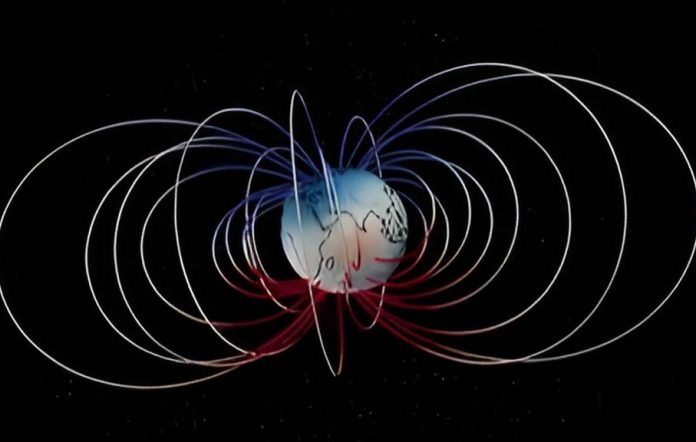
About 41,000 years ago, Earth experienced a brief magnetic field reversal during an event known as the Laschamp event.
During this period, Earth’s magnetic field became extremely weak—dropping to just 5% of its current strength.
This weakening allowed more cosmic rays to penetrate Earth’s atmosphere.
Scientists from the Technical University of Denmark and the German Research Center for Geosciences have now recreated the sound of this ancient magnetic flip using data from the European Space Agency’s (ESA) Swarm mission.
The team used information about how Earth’s magnetic field lines moved during the Laschamp event to create a “sounded visualization,” transforming data into sound.
The audio created is a blend of natural noises, such as creaking wood and falling rocks, which were manipulated to produce strange, almost alien-like sounds.
The process is similar to composing music, where data acts like a musical score.
This project helps bring Earth’s magnetic history to life in an innovative way.
The Swarm satellites, which measure Earth’s magnetic signals from various layers—including the core, mantle, crust, and atmosphere—are helping scientists better understand geomagnetic reversals like the Laschamp event, as well as how Earth’s magnetic field is generated.
The first sound version of Earth’s magnetic field created with Swarm data was played in a public square in Copenhagen.
It was broadcast through a 32-speaker system, with each speaker representing magnetic field changes from different parts of the world over the past 100,000 years.
This fascinating blend of science and art gives people a new way to experience Earth’s magnetic history and shows how data can be transformed into sound to help us better understand our planet.



